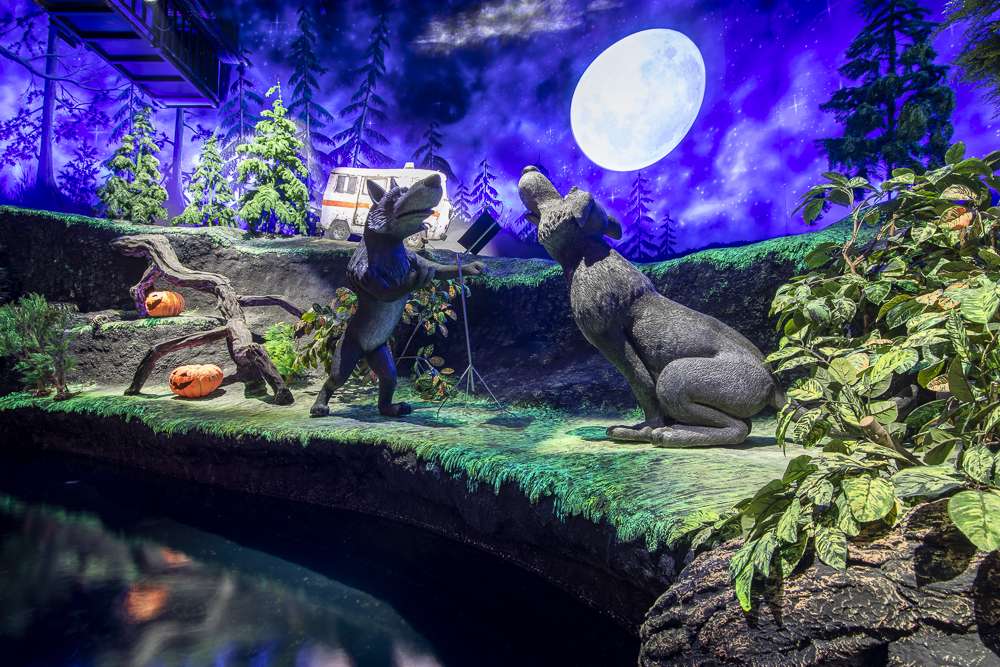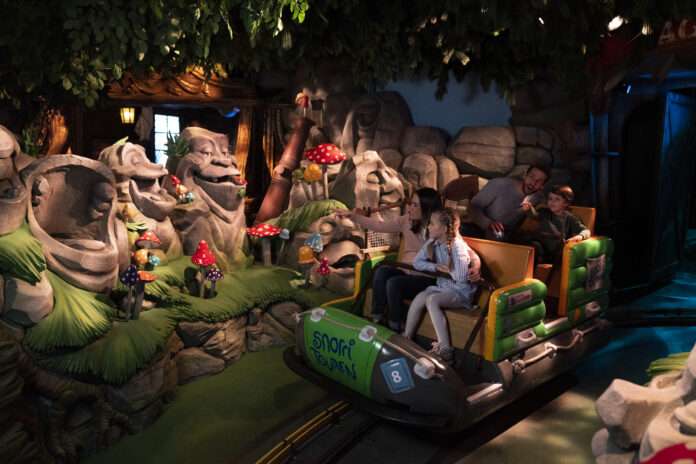Electrosonic makes the connection between themed entertainment and spatial computing
by James Careless
What, exactly, is spatial computing – and what does it signify in the attractions industry?
“Welcome to the era of spatial computing” is one of the first things you see on the website for Apple Inc.’s new Vision Pro augmented reality headset. At Electrosonic – an international audiovisual and technology services company with nearly 60 years of designing, building and supporting experiential technology – “spatial computing” is seen as a term that is still evolving.
Yiannis Cabolis, Director of Technology Innovation, Electrosonic, describes spatial computing as “the utilization of digital technology to facilitate computer interaction within a three-dimensional realm” – essentially, providing interface between humans and digital volumetric applications.
Spatial computing is an umbrella term that includes many technologies such as virtual, augmented, mixed, and extended realities. It enables a variety of capabilities such as mapping applications that help you navigate an unfamiliar area, open- world video games where you are free to roam the digital landscape and discover areas at your own pace, and messaging avatars that allow you to assume a digital persona through recorded or real-time conversations.
For amusement park and attractions owners, spatial computing opens up a whole new virtual world of possibilities. Guests could visit three-dimensional models of the venue prior to their visit to plan out their experience and get a sense of what’s to come.
Video kiosks in a park could allow people to become their favorite character through a digital overlay on the screen.
Rides could incorporate personalized gamification through augmented reality – allowing riders to interact with virtual elements as they move through the physical space.
“By employing spatial computing, actions and interactions between machines, individuals, objects, and their surroundings can be enhanced and optimized,” said Yiannis Cabolis.
To make these new experiences feasible, an array of technologies need to be deployed. For certain scenarios, “Spatial computing heavily relies on sensors and input devices to gather real-time data about the physical environment,” said Cabolis. “These devices can range from cameras and depth sensors to motion trackers and haptic devices. By capturing depth, motion, and gestures, they provide vital inputs for spatial computing systems.” Bolstered by these powerful elements, “spatial computing enhances storytelling by providing immersive environments, enabling interactivity and user participation, offering multidimensional narratives, augmenting the context, facilitating collaborative storytelling, and intensifying emotional engagement,” he noted. “These capabilities open up new possibilities for storytellers to create compelling and memorable narrative experiences.”



An era of new possibilities
While spatial computing can be a driver of new experiences, it can also be leveraged to plan and design those experiences. Technology previsualization – another application of spatial computing – allows theme park and attraction owners to see their space before it is built. “Architects are great at creating really nice conceptual images,” said Ryan Poe, Director of Technology Solutions. “But if our clients at the parks are going to invest significantly in these projects, they need to have confidence that the end results are going to match their expectations. This is why we’re focused on creating high fidelity depictions of what the spaces and the technology within them will actually look like. Of course, you can do that by physically building mockups ahead of time. But again, there’s a lot of expense and effort that goes into that. If we can do that digitally, it’s a lower initial cost and then we can make changes on the fly.”
Designing LED video walls is just one example where previsualization can be effective. “One pixel pitch, in theory, might be much cheaper and more affordable than another for either a screen or an LED wall,” said Lydia McDaniels, Building Information Modelling Designer and previsualization expert at Electrosonic. “But it may not perform as other pixel pitch options in practice. Technology previsualization can help you visualize the actual differences between those pixel pitches, and how this will affect how the display is going to look in real life. This knowledge helps our clients make the best decisions when it comes to what they’re putting their money into before they actually commit to building it.”
McDaniels uses powerful 3D modeling tools and game engines to create pixel-accurate representations of spaces and experiences before a hammer ever hits a nail. But the benefits extend beyond just planning and preparation. If these detailed models are connected to real-world feedback, then a “digital twin” can be created. This virtual version of an actual space can be manipulated without affecting the real environment. The benefit of having a digital twin is that “a park could test alternative content in the digital twin without having to actually shut the physical attraction down to test it out there,” said Poe. In fact, all proposed changes to the attraction could be made to a copy of the digital twin to see what works and what doesn’t — all without the cost and disruption of shutting down the real attraction.

These are some of the powerful possibilities of spatial computing for the amusement parks and attractions industry. Collectively, they have the ability to allow owners to deliver new experiences and make better decisions in creating new attractions and updating existing ones, while controlling costs, avoiding project delays, and minimizing disruptions on their properties.
Electrosonic and themed entertainment
Since its founding in 1964, Electrosonic has been at the forefront of sophisticated attraction design and implementation. The company has helped design innovative AV and media systems for many attractions that have received Thea Awards, including Snorri Touren at Europa-Park, honored in 2021 with a Thea Award for Outstanding Achievement. Electrosonic also led key audio, video and automation roles in attractions such as Masha and the Bear Land of Laughter at Land of Legends in Antalya, Turkey; and The Globe 30-foot interactive LED illuminated sculpture at AT&T Discovery District, an award-winning city district in the heart of Dallas, open since June 2021.
“We have a collective know-how that, in my opinion, is second to none because we have been around for quite some time,” said Cabolis. “We are also unique due to our Technology Partner program at Electrosonic, which brings together cutting-edge technology innovators in both hardware and software to create synergies among like-minded companies, enabling the creation of world-class experiential technology.”
Added Poe, “Along with a focus on shared innovation, this program aims to establish collaboration among members, embedding shared values while supporting customers globally in designing, building and supporting world-class experiential technology spaces.”
Welcome to the era of spatial computing in themed entertainment! •
Electrosonic’s Design Consulting practice leverages nearly 60 years of global experience combining creativity, innovation and AV system design to support the creation of great guest experiences. Through emerging technologies such as spatial computing, they collaborate with theme park
operators, designers and creatives throughout the entire project life cycle. Visit www.electrosonic.com.






